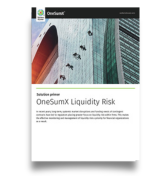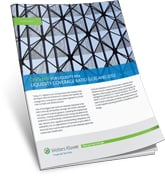Benefits of our OneSumX Liquidity Risk Management software solution
OneSumX Liquidity Risk Management, which forms part of our wider risk management solution, introduces a risk management, stress engine and regulatory reporting platform to help firms monitor, manage and report on liquidity risk. To achieve this, financial instruments are mapped into the solution, and strategies and stress scenarios can be performed to identify the impact to both market and funding liquidity. The liquidity results are reported on a dashboard view provided to risk analysts, liquidity managers, regulators and decision makers.







